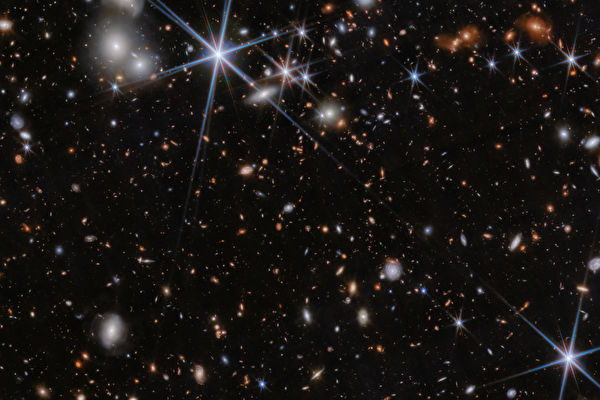Through the James Webb Space Telescope of the National Aeronautics and Space Administration (NASA), astronomers have discovered evidence of two galaxies merging along with their massive black holes. This merger event took place in the early universe and represents the most distant known black hole merger to date.
The James Webb Space Telescope website mentioned in a press release on May 16th that astronomers have identified supermassive black holes in most massive galaxies in the nearby universe, with masses ranging from several million to tens of billions times that of the Sun, including our own Milky Way.
These black holes may have a significant impact on their respective galaxies. However, astronomers do not fully understand how these black holes grew to be so massive.
Astronomers have found evidence of massive black holes existing within a billion years after the Big Bang, indicating that the growth of these black holes was both rapid and early. The recent discoveries by the James Webb Space Telescope shed light on the growth of supermassive black holes in the early universe.
The new observations from the James Webb Space Telescope provide evidence of two galaxies merging along with their supermassive black holes. This merger event happened when the universe was only 7.4 billion years old. The entire system is referred to as ZS7.
Supermassive black holes that actively accrete matter have distinct spectroscopic features that astronomers can identify. However, for extremely distant black holes like the ones discovered in this study, these features cannot be observed with ground-based telescopes and require the exceptional performance of the James Webb Space Telescope.
Hannah Übler, a researcher from the University of Cambridge, who authored the report on this study, stated, “Near the black holes, we discovered fast-moving, highly dense gas, as well as high-temperature and highly ionized gas illuminated by the high-energy radiation produced during the black hole’s accretion process.”
Übler mentioned that the high resolution of the James Webb Space Telescope enabled them to distinguish between the two black holes.
Roberto Maiolino, a researcher from University College London and the University of Cambridge involved in the study, mentioned that one of the black holes had a mass 50 million times that of the Sun, while the mass of the other black hole is likely similar but is more challenging to measure due to being obscured by dense gas.
Übler stated, “Our findings indicate that mergers are an essential pathway for black holes to rapidly grow, even in the early universe.”
She noted that their research findings, along with the previous discoveries of active and massive black holes in the distant universe by the James Webb Space Telescope, underscore that these enormous black holes have been shaping the evolution of galaxies from the beginning.
Pablo G. Pérez-González, another researcher from the Centro de Astrobiología in Spain, added that the stellar mass of ZS7 is similar to that of the Large Magellanic Cloud near the Milky Way.
He said, “We try to imagine how galaxies would be influenced if each merging galaxy harbored even larger black holes than the supermassive black holes in the Milky Way.”
The research team also mentioned that once these two galaxies merge, they will generate gravitational waves. Such events can be observed through the next generation of gravitational wave observatories, such as the Laser Interferometer Space Antenna, recently approved by the European Space Agency. It will be the first space-based observatory dedicated to studying gravitational waves.
The research findings were published on May 16th in the “Monthly Notices of the Royal Astronomical Society.”

